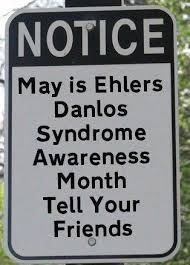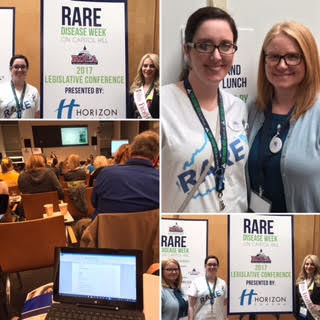Know Your Love Language? Learn to Speak it Well Despite Chronic Illness

Learn to speak your partner’s love language despite chronic illness
Did you know each of us shows affection and love in different ways? No matter who you might be cuddled up to this Valentine’s Day, it’s important to understand that a successful intimate relationship is a constantly evolving process of tuning in, adapting, and forging deeper connections, compassion, and caring for one another. Becoming aware of – and adapting to – a partner’s love language can improve your wellbeing, and your partner’s well-being leading enhance the overall quality of intimate relationships. One study from NIH found that exposure to preferred love languages had a significant effect on the autonomic nervous system. Individuals tend to favor one or two love languages and often express affection in the same way they wish to receive it. While partners might express love and affection using their primary love language, the message may be misinterpreted or go completely unnoticed if they do not share the same preference. Other research suggests that couples who enjoy higher-quality relationships ensure that both partners are receiving their preferred love language. So it’s important to know yours and your partner’s language of choice.
Imagine two bodies of water that can flow freely into one another. This is what a healthy, emotionally open relationship looks like. Now, imagine they are separated by a dam that gets blocked. The resulting pressure will eventually cause it to burst, wreaking havoc. Relationships lacking open communication and emotional availability can be similar, with couples becoming closed off from one another by a blocked “emotional dam”. And when it bursts, the resulting outpouring can wreak havoc on the relationship.
Keep the proverbial dam open by exploring your love language and learning to speak the preferred language of your partner allows you both to feel more connected, loved, valued, and appreciated. Knowing your partner’s love language can give you a deeper understanding of their wants and needs while also helping you notice how your partner is expressing his or her love to you.
Why is it Called a Love Language?
English, Mandarin, Swahili, Quechua: the world is full of languages, and most of us don’t understand a single word if a person talks to us in a language we don’t speak. In fact, trying to communicate without a shared language is fertile ground for misunderstanding, conflict and resentment. Luckily, however, most of us speak the same language as our partner. Or do we?
Actually, in a sense, we really don’t. There are different languages or ways to express love, and understanding your own and your partner’s primary way of communicating is a crucial part of any good relationship or marriage. In this article, we will introduce concepts about the human need for love, the way love is communicated between people, and how to identify the love language you speak.
In a world where expressions of love are as diverse as humanity itself, understanding your love language, especially in the context of chronic illness, becomes vital for nurturing meaningful relationships. The concept of “love languages” was popularized by Dr. Gary Chapman, who identified five distinct ways people express and receive love. In his book, The 5 Love Languages, he elaborates on how to develop relationships of lifelong love that can easily overcome the hurdles that modern couples face. We will dive into the five ways people give and feel love, and how any couple can use this knowledge to make their relationship more nurturing, affectionate, and compassionate. These languages are (1) Words of Affirmation, (2) Quality Time, (3) Receiving Gifts, (4) Acts of Service, and (5) Physical Touch according to Chapman.
If there’s one word in the English language that’s both absolutely essential and totally confusing, it’s the word “love.” But despite its countless meanings, philosophers and religious thinkers alike agree that love is essential to a full and fulfilling life.
So why should you think about love?
Well, first of all it’s important not to get confused by the word’s many definitions. Instead, you should concentrate on the type of love that’s key to your emotional health. The easiest way to define what love means to you is to look at the sources of your emotional fulfillment. That’s because the need to be loved and appreciated is rooted deep in human nature. For instance, child psychologists have shown that all children have emotional needs that, if left unmet, can result in emotional instability. Especially love and affection.
Most people know that language consists of more than mere words – there’s body language, for instance, and tone of voice. Well, the language of love is equally complex. That’s because different people perceive love in different ways, and use different words and actions to express it. Essentially, we all speak a different love language. Isn’t it worth it to know yours and how to speak directly to the ones you love most?
Just like being multilingual can be to your advantage, understanding the different ways love is expressed will help you build a strong, happy and healthy relationship. But this requires couples to devote the necessary time to discovering the nuances of one another’s love language. It’ll be worth the effort, though, because that’s the surest route to filling your partner’s love tank of value and worth.
The Five Love Languages Explained & How to Speak It
- Words of Affirmation: This language uses words to affirm and appreciate others. Compliments, words of encouragement, and verbal acknowledgment of affection are essential.
Here’s how to speak it…
While a simple “I am proud of you,” “You look really nice today,” or hearing the words, “I love you,” are important – hearing the reasons behind that love is even more so. Be specific with your words of affirmation, the things you say mean a lot and should be spoken sincerely as an expression of the love you feel for your partner.
Things to avoid: Insults, unkind words, and criticism are not easily forgotten and can be particularly upsetting to people who favor words of affirmation.
- Quality Time: This language is all about giving undivided attention. It involves sharing time together, engaging in meaningful conversations, or participating in shared activities. Quality time is more than just being together – knowing that time was set aside for them and only them reinforces the fact that they are important.
How to speak it…
Maximize one-on-one time, have uninterrupted conversations, and take part in meaningful activities. The emphasis is on being together, doing things you both enjoy, and giving each other undivided attention. Not just sitting the same room watch the same TV.
Things to avoid: Having a distracted or distant partner and postponed dates can make these individuals feel neglected and overlooked. So, get off your phone as you sit across from each other at the dinner table tonight.
- Receiving Gifts: Here, love is expressed through thoughtful gifts. It’s not about materialism; the thoughtfulness and effort behind the gift are what matter.
Here’s how it works:
People who favor this language feel most appreciated and loved when their partner has thought about them and invested time and energy finding just the right gift for them. This is not to say that gifts need to be expensive; rather, it is more about what the gifts represent.
How to speak it…
It is likely that he or she thrives on thoughtful and symbolic gestures, maybe even surprises. It doesn’t matter whether it costs money, it is the thoughtfulness, love, and effort behind a gift that makes it special. Gifts can be purchased, found, or made by you – what is important is that you thought of your partner. Do not wait for a special occasion. Almost anything you give will be seen as an expression of your love.
Things to avoid: Forgetting about special dates like birthdays and anniversaries or hasty, unthoughtful gifts. To individuals who favor this love language, the absence of everyday gestures or missed special occasions can be particularly hurtful.
- Acts of Service: For some, actions speak louder than words. Doing something helpful or kind, like cooking a meal or running errands, is a powerful expression of love and care. Thiss means doing things for your partner that you know he or she will appreciate. Individuals who favor this language feel most loved when their partner commits thought, time, and effort to activities that help alleviate their daily workload.
How to speak it…
Try using phrases like “I’ll help” or “let me do it for you.” Do chores or other tasks that will ease your partner’s burdens. Ask your partner which acts of service would mean the most to them: these could include preparing meals, doing the dishes, putting the kids to bed, or doing projects around the house.
Things to avoid…
Broken commitments, laziness, lack of support, and being unthoughtful are all ways your partner can feel unappreciated and even unloved. If your partner’s primary love language is acts of service, doing things for them because you feel obliged to do them can also be damaging.
But just as you can’t demand love, you can’t demand acts of service from your partner. Nor can they from you. To be truly legitimate, such acts need to be voluntary. So, instead of asking what your partner can do for you, ask what you can do for your partner.
However, keep in mind that asking this question might require you to take a look at, and maybe even adjust your views on, traditional gender roles. For instance, running a home and caring for children is not necessarily a task for women; learning about acts of service requires you to decide for yourself what your responsibilities are, regardless of stereotypes.
- Physical Touch: This language involves expressing love through physical touch, which can range from holding hands to cuddling.
Did you know that babies who are caressed, held and kissed go on to lead healthier emotional lives than those who aren’t? It’s true, and it should come as no surprise that physical touch is some people’s primary love language.
For these individuals, nothing has a greater effect than the physical touch of their partner. Gentle caresses, holding hands, and physical embraces make these people feel more connected and safer in a relationship. Physical touch is not about sex or over-the-top displays of affection; rather, it is about experiencing moments of intimacy in everyday activities.
How to speak it…
People who favor this love language associate physical closeness with emotional closeness – hugs, kisses, holding hands, and massages are all ways to show your love and affection. Think about the daily interactions you have together and the ways in which you can introduce or increase non-sexual physical contact.
Things to avoid…
When someone favors physical touch over the other four love languages, he or she may feel unloved without regular, non-sexual physical contact and when a partner is not physically present.
It’s also essential to work hard at understanding which subtler forms of physical contact can fill your partner’s love tank. Vary the pressure of touch. Experiment! And of course, when it comes to touch, what’s appropriate and inappropriate can only be determined by you and your partner.
Tying Love Languages and Chronic Illness Together
Living with a chronic illness can impact how you give and receive love, just as pain and fatigue impact people. The key is adaptability and understanding, not only of your own physical and emotional needs, but that of your loved one. Here are a few examples of ways to fill your love tank when you have chronic illness…
1. Words of Affirmation: Chronic illness doesn’t diminish the power of kind words. Expressing love, support, and encouragement through words can be incredibly uplifting and validating.
2. Quality Time: While physical activities might be limited, quality time can still be spent through shared hobbies, watching movies, or simply talking.
3. Receiving Gifts: Thoughtful gifts can be a wonderful way to show care, especially when they’re tailored to the person’s needs or interests. Try some Zebra swag!
4. Acts of Service: Helping out with daily tasks can be a huge relief for someone with a chronic illness, showcasing love through practical support.
5. Physical Touch: Gentle, comforting touches can be soothing, but it’s crucial to be mindful of physical limitations, skin sensitivities, and pain levels.
Identifying Your Love Language
All right, now you know the five love languages, but how can you tell which one is your primary one? It’s pretty easy to find out:
First, ask yourself what you most often request of your partner. It’s likely that the things you ask for the most are the things that you find most emotionally fulfilling. Then follow your instincts and consider what comes to mind when you want to feel truly appreciated. Perhaps it’s spending time with someone or receiving praise.
Once you know what feels good, consider what your partner does that hurts you. In fact, painful relationship experiences can be an accurate guide to finding your love language. Just think back on what your partners have failed to do for you in the past.
For instance, if someone you were close to caused you serious pain or failed to show you love in the way you wanted, perhaps that person simply failed to understand the way you desired to be loved. If all such instances fall in the same category, there’s a good chance that that category is your primary love language.
But your upbringing also has a major effect on the development of your love language. So it’s helpful to consider how your parents made you feel loved (or unloved) while you were growing up. Such memories are another path to figuring out which language you speak.
If you still don’t have your love language figured out, take the Chapman’s Five Love Languages online quiz.
Ensuring You Get the Love You Need
There are a few key ways to ensure you and your partner both understand each other’s preference outlined below.
- Use Open Communication: Express your needs and any physical limitations clearly. Help your partner understand how your illness affects your ability to give and receive love.
- Adapt and Compromise: Be willing to adapt your love languages to fit your physical and emotional state. For instance, if physical touch is difficult, focus on words of affirmation or quality time.
- Support Networks: Don’t rely solely on a romantic partner. Cultivating a support network of friends and family can provide a well-rounded emotional support system.
- Professional Guidance: Consider counseling or therapy, either individually or as a couple, to navigate the complexities of relationships and chronic illness.
Bottom line advice to getting the love you desire is to ‘give and you shall receive.’ Helping your loved one through hard times with the greatest gift of all. So, what’s the best present you could give your partner? To give you a hint, it’s not diamonds, flowers or a new car. It’s the gift of self – which simply means standing by your partner, especially during rough periods. So, simply being there during those difficult times – like illness or a career upheaval – is absolutely key. You’ll be surprised what an impact you can make by committing to being present when the going gets tough. Love, in all its forms, is a powerful force that can bring comfort and joy, even in challenging circumstances.
Bibliography
- Gary Chapman – The 5 Love Languages: Book Review & Summary – Just Stop Screaming. https://juststopscreaming.com/gary-chapman-the-5-love-languages/
- [thehealthsessions.com – 60 Spoonie-Proof Ways to Express Your Love in Each …](https://thehealthsessions.com/love-language-2/)
- [overcomewithus.com – Love Language Types: The Complete Guide](https://overcomewithus.com/couples/love-language-types-the-complete-guide)
- [riveroakspsychology.com – What Is My Love Language, and How Can It Help …](https://riveroakspsychology.com/what-is-my-love-language-and-how-can-it-help-my-relationship/)
- [mamasfacingforward.com – The 5 Love Languages – A Tool For Improving …](https://www.mamasfacingforward.com/2023/01/26/the-5-love-languages-a-tool-for-improving-communication-in-relationships/)
- [creakyjoints.org – How to Maintain Sex and Intimacy with a Chronic Illness](https://creakyjoints.org/lifestyle/maintain-sex-intimacy-with-chronic-illness/)
- [health.com – The 5 Love Languages: Types, Uses, and Benefits](https://www.health.com/love-languages-7104183)




























